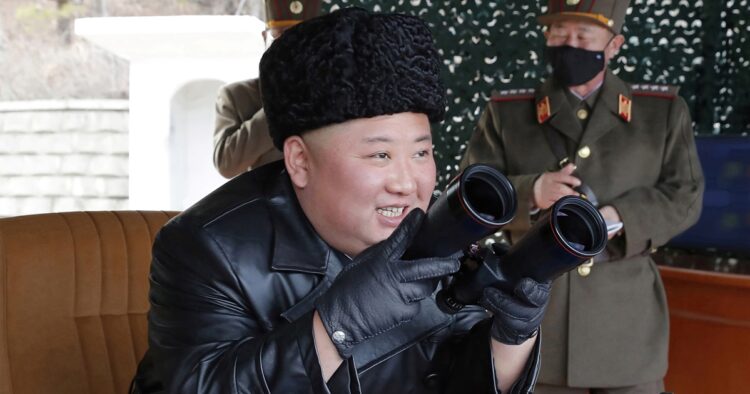North Korea has launched multiple short-range ballistic missiles into its eastern waters, according to reports from neighboring countries. This action follows the conclusion of joint military exercises between South Korea and the United States, which North Korea perceives as rehearsals for invasion.
The missile launches, which mark North Korea’s first known testing activities in about a month, coincided with U.S. Secretary of State Antony Blinken’s visit to Seoul for a democracy summit. Analysts had previously anticipated such tests, suggesting North Korea might escalate its military activities ahead of the U.S. presidential election to strengthen its bargaining position in future negotiations.
Japan’s Defense Ministry confirmed that North Korea fired three missiles, with two launched simultaneously at 7:44 a.m. and the third approximately 37 minutes later. These missiles landed in waters between the Korean Peninsula and Japan, outside of Japan’s exclusive economic zone, causing no reported damage or injuries.
Japanese Prime Minister Fumio Kishida condemned North Korea’s repeated ballistic missile tests as threats to regional peace and safety. He emphasized that these actions violated U.N. Security Council resolutions prohibiting North Korea from engaging in ballistic activities.
Similarly, South Korea’s military detected several suspected short-range ballistic missile launches by North Korea on Monday morning. The Joint Chiefs of Staff labeled these launches as clear provocations that endanger peace on the Korean Peninsula, affirming South Korea’s commitment to maintaining readiness alongside the United States.
According to assessments from both Japan and South Korea, the fired missiles traveled approximately 300-350 kilometers and reached a maximum altitude of 50 kilometers. Analysts suggest these missiles are aimed at major facilities in South Korea, such as military headquarters in the central region.
The U.S. State Department condemned the missile launches, highlighting the threat they pose to North Korea’s neighbors and regional security. The statement reiterated the United States’ unwavering commitment to the defense of South Korea and Japan.
These developments come after North Korean leader Kim Jong Un oversaw military training exercises involving tanks, artillery guns, and paratroopers during the recent South Korea-U.S. drills. While the drills concluded without North Korean missile tests, the regime’s actions underscore ongoing tensions in the region.
Animosities on the Korean Peninsula persist, exacerbated by North Korea’s series of missile tests since 2022. Despite international efforts to curb its nuclear ambitions, North Korea continues to enhance its weapons arsenal, seeking leverage in diplomatic negotiations.
Concerns about North Korean military activities have escalated since Kim Jong Un’s January speech, in which he signaled a shift away from seeking peaceful unification of the Korean Peninsula and identified South Korea as an enemy. While the possibility of a full-scale attack remains low, observers warn of potential provocations along the border with South Korea.

















Comments